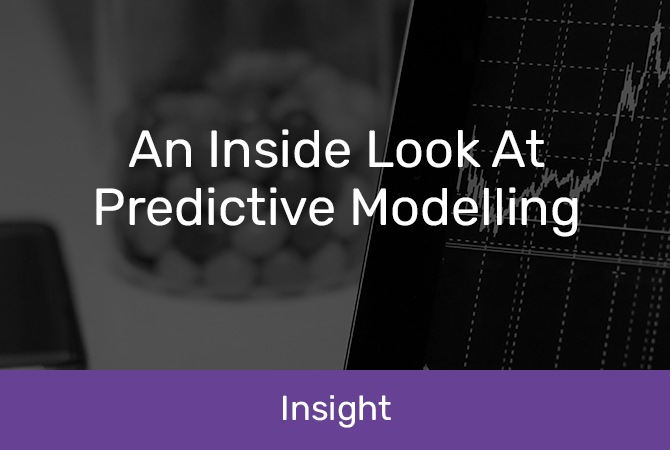An Inside Look at Predictive Modelling
a step-by-step breakdown
Predictive modelling is a powerful tool for business decision-making. The applications are endless – predicting churn in marketing, managing supply chains in wholesale and distribution, optimising equipment maintenance in construction and delivery, and even managing healthcare triaging.
Predictive modelling is the process of using past information to predict the future. By looking at the correlation between events and outcomes, modellers can determine the probability of a specific result.
Of course, when you dig into the details, predictive modelling is a bit more complicated. Creating a predictive model can involve complex mathematical equations, AI and machine learning, data sets and statistical analysis, validation and continual testing – and that’s before you get any useful results.
So how does the process work here at Datamine? Here’s our inside look at how we run predictive modelling.
 Plan, build and implement
Plan, build and implement
We walk you through the process – from goal setting and building to customer ranking.
1. Defining objectives
Models are extremely specific – each is built to look at a particular dataset and measure the variables. You can’t take a model that predicts home loan churn, for example, and use it to forecast credit card churn.
That’s why goal-setting is the first step in the predictive modelling process. It’s crucial to define what you’re hoping to achieve, the event or action the model needs to predict, and the timeframe. For example, your objective might be: ‘Predict which customers are likely to cancel their credit cards in the next month.’
2. Compiling relevant datasets
The model will draw from a broad base of information – a data set. Creating a dataset needs to involve people from the technical and business sides – as the data will depend on business objectives.
Variables can include behavioural, demographic, geographic or external factors – for example, the weather or competitor information. In most cases, behavioural data is the focus, as it’s the most accurate predictor of future behaviour.
Your dataset may also need to exclude some customers. If you’re looking at purchasing behaviour over a year, newer customers won’t be useful. You need to choose exclusions carefully, though, as you don’t want to inadvertently exclude customers who are the model’s focus. One example: if you’re building a model to predict customer churn, you need to include customers who have left your business.
3. Building the model
Your analytics team will build the actual model. At this point, some of the variables from your original planning may be discarded, because they repeat other variables or add little value.
4. Calculating scores
Once your model is built, you’ll have an equation to assess the customers in your dataset and allocate a score to each. The score shows how likely a given customer is to take the action the model is designed to predict – for example, the likelihood that they will churn within the next month.
5. Validating the model
Validating is a key part of predictive modelling. Without it, you won’t know how accurate your model is. Validation is like having a control group for a scientific experiment – you compare the predictions generated by your model with data from a set of customers not included in the original dataset. This group needs to be broadly similar to your active dataset, or validation won’t be accurate.
6. Using the model
When your model is built and validated, you can finally use it. Your analytics team will run your model over your database and give customers a score. This doesn’t happen just once: you can run your model frequently to keep up with changes and track customer behaviour in the long term. How often you use it depends on what you’re tracking and how your business works – some sectors move more quickly, so they need more frequent forecasting.
7. Ranking your customer base
The information from your model now turns into useful data for your team. Your customers will be ranked by score, breaking them into groups based on the likelihood of your predicted outcome. While these scores won’t always be 100% accurate, your ranked list gives you a strong base for customer targeting.
For example, you may target customers most likely to churn (those with the lowest scores) with an extensive nurture journey aimed at keeping them around. Customers at the top of the rankings – those least likely to churn – could be targeted with a loyalty programme or similar initiative.
8. Measuring the effectiveness of your model
Predictive modelling relies on continual testing, measuring and updating to optimise effectiveness. The market changes rapidly, and customer behaviour that predicts a certain outcome one year may have a completely different result the next.
Your analytics team will regularly track and test your model – and the initiatives it generates – to know when it needs to be reworked. In most cases, models need to be reviewed and rebuilt yearly.
 Using predictive modelling in your business
Using predictive modelling in your business
Predictive and AI modelling aren’t one-off jobs – they’re long-term ways of analysing and leveraging your business data. The results can be invaluable, and as we’ve seen, the process is anything but simple, requiring expert input and support.
That’s where we come in. We’ve been building, implementing and managing predictive models for 27 years, so we’re more than ready to support your business as you dive into your data.
















































